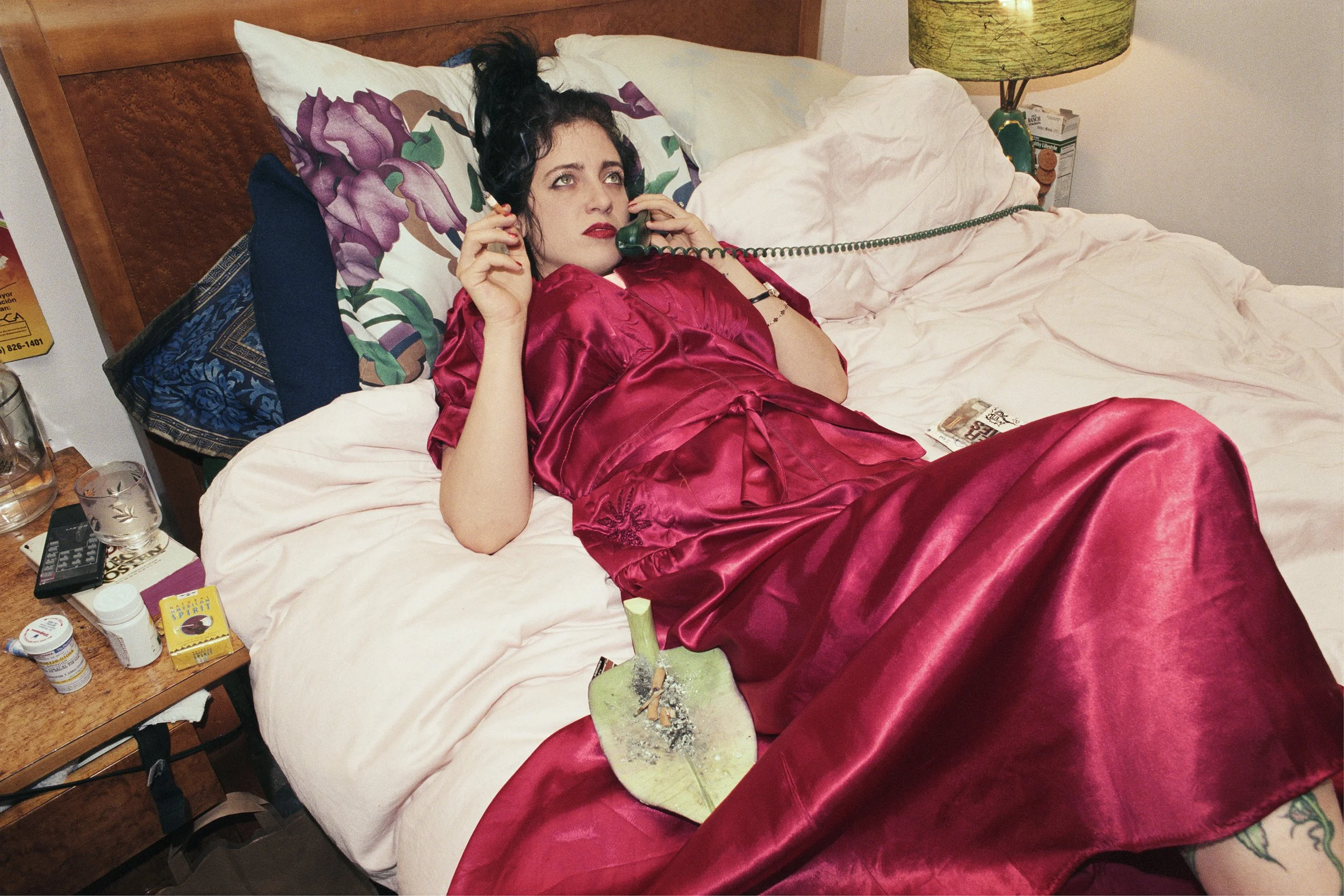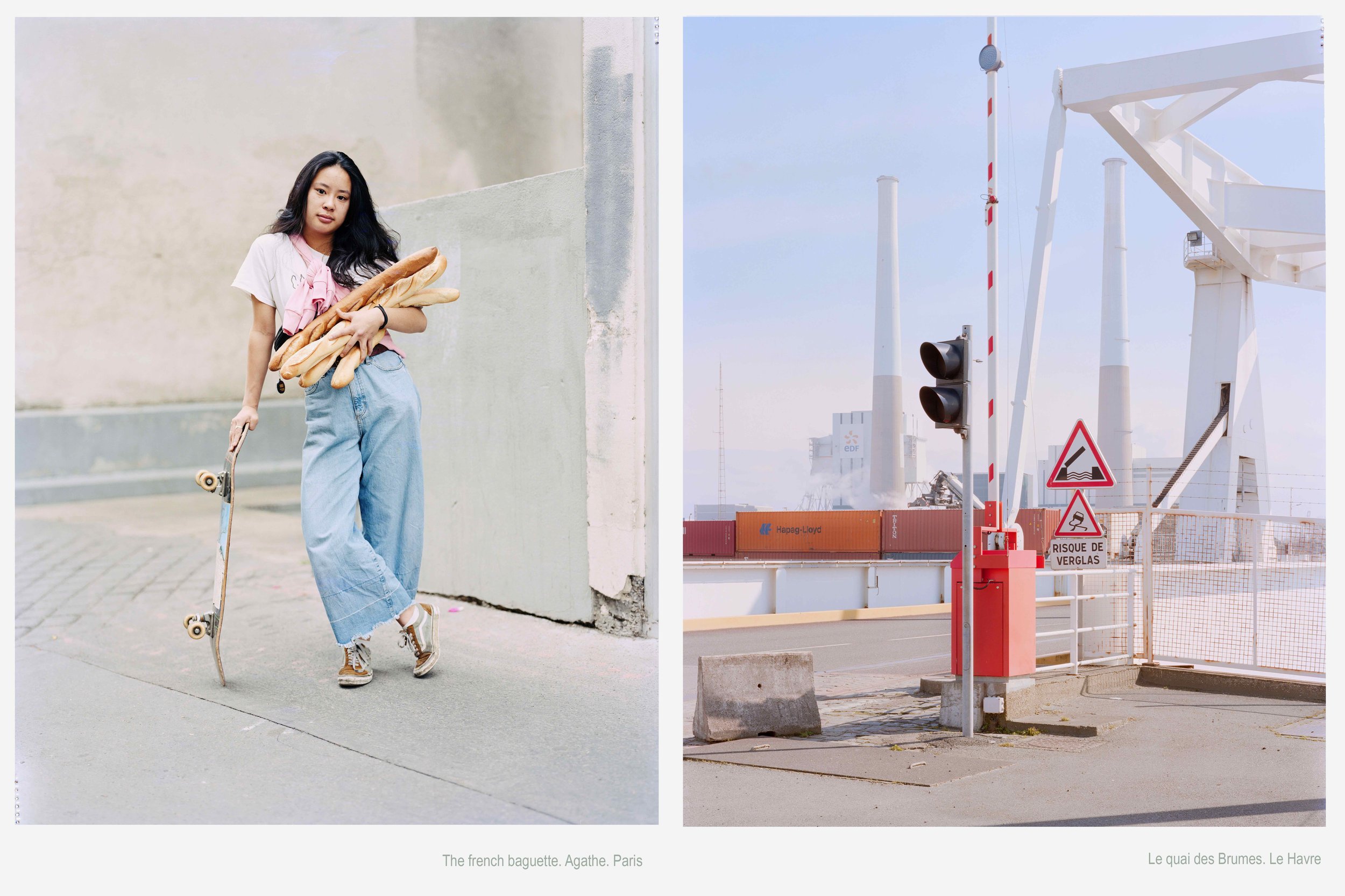
RENEGADES. San Francisco: Queer Life in the 1990s - Chloe Sherman | f3 - freiraum für fotografie | Berlin
f3 - freiraum für fotografie | Berlin
30. Juni - 3. September 2023
RENEGADES. San Francisco: Queer Life in the 1990s
Chloe Sherman
Liebe/Hass, Ruhe in Frieden Christopher Lee, 1999 © Chloe Sherman
San Francisco in den 90er Jahren war eine entscheidende, wegweisende Zeit und ich hatte das Glück, ein Teil davon zu sein. Ich fand Schönheit, Anmut und Tapferkeit in der queeren Subkultur, die sich eine eigene Identität abseits der Mainstream-Gesellschaft schuf. Meine Fotografien dokumentieren den einzigartigen Puls der Stadt während dieser Zeit und halten fest, wie wir das Anderssein in der Sicherheit unserer Gemeinschaft feierten. (Chloe Sherman, 2023)
Auch die junge Fotografin Chloe Sherman genoss das Leben in der für ihre Offenheit berühmten Westküstenmetropole. Als Kunststudentin begann sie die lesbische und queere Szene San Franciscos zu fotografieren. Inspiriert von Del LaGrace Volcanos Fotografien der Londoner Lesbenszene, hielt Sherman ihre eigene Welt der Femmes, Butches, Punks und Studs fest und füllte einen ganzen Wandschrank mit 35-mm-Negativen. Mit dem differenzierten Blick einer Insiderin dokumentierte sie eine sich entwickelnde Gemeinschaft, die sich entschlossen gegen die vorherrschenden kulturellen Normen auflehnte und ihre ganz eigenen Regeln für den Umgang mit gängigen Geschlechterzuschreibungen und dem gesellschaftlichen Zusammenleben entwickelte.
Auch die junge Fotografin Chloe Sherman genoss das Leben in der für ihre Offenheit berühmten Westküstenmetropole. Als Kunststudentin begann sie die lesbische und queere Szene San Franciscos zu fotografieren. Inspiriert von Del LaGrace Volcanos Fotografien der Londoner Lesbenszene, hielt Sherman ihre eigene Welt der Femmes, Butches, Punks und Studs fest und füllte einen ganzen Wandschrank mit 35-mm-Negativen. Mit dem differenzierten Blick einer Insiderin dokumentierte sie eine sich entwickelnde Gemeinschaft, die sich entschlossen gegen die vorherrschenden kulturellen Normen auflehnte und ihre ganz eigenen Regeln für den Umgang mit gängigen Geschlechterzuschreibungen und dem gesellschaftlichen Zusammenleben entwickelte.
30 Jahre lagerten die Fotografien jener Zeit vergessen im Archiv der Fotografin. RENEGADES. San Francisco: Queer Life in the 1990s präsentiert die herausragenden und historisch bedeutenden Aufnahmen nun erstmalig einem Publikum außerhalb der USA. Chloe Shermans Ausstellung fängt den rebellischen Geist jener Zeit ein und porträtiert offen eine zukunftsweisende Ära.
Chloe Sherman (*1969, New York) kam 1991 nach San Francisco, um am San Francisco Art Institute Fine Art-Fotografie zu studieren. Ihre Arbeiten wurden international ausgestellt und in Zeitschriften wie Rolling Stone und Interview veröffentlicht.
San Francisco dans les années 90 a été une période décisive et pionnière, et j'ai eu la chance d'en faire partie. J'ai trouvé de la beauté, de la grâce et de la bravoure dans la sous-culture queer qui se créait sa propre identité à l'écart de la société mainstream. Mes photographies documentent le pouls unique de la ville pendant cette période et enregistrent la façon dont nous célébrions la différence dans la sécurité de notre communauté. (Chloe Sherman, 2023)
La jeune photographe Chloe Sherman a également apprécié la vie dans cette métropole de la côte ouest, célèbre pour son ouverture d'esprit. Alors qu'elle était étudiante en art, elle a commencé à photographier la scène lesbienne et queer de San Francisco. Inspirée par les photographies de Del LaGrace Volcano sur la scène lesbienne londonienne, Sherman a capturé son propre monde de femmes, de butches, de punks et de studs et a rempli un placard entier de négatifs 35 mm. Avec le regard nuancé d'une initiée, elle a documenté une communauté en plein développement qui s'est résolument rebellée contre les normes culturelles dominantes et a développé ses propres règles pour faire face aux attributions de genre courantes et à la cohabitation sociale.
La jeune photographe Chloe Sherman a elle aussi apprécié la vie dans cette métropole de la côte ouest, célèbre pour son ouverture d'esprit. En tant qu'étudiante en art, elle a commencé à photographier la scène lesbienne et queer de San Francisco. Inspirée par les photographies de Del LaGrace Volcano sur la scène lesbienne londonienne, Sherman a capturé son propre monde de femmes, de butches, de punks et de studs et a rempli un placard entier de négatifs 35 mm. Avec le regard nuancé d'une initiée, elle a documenté une communauté en plein développement qui s'est résolument opposée aux normes culturelles dominantes et a développé ses propres règles pour faire face aux attributions de genre courantes et à la cohabitation sociale.
Pendant 30 ans, les photographies de cette époque sont restées oubliées dans les archives de la photographe. RENEGADES. San Francisco : Queer Life in the 1990s présente pour la première fois ces clichés exceptionnels et historiquement importants à un public extérieur aux États-Unis. L'exposition de Chloe Sherman capture l'esprit rebelle de cette époque et dresse ouvertement le portrait d'une ère d'avenir.
Chloe Sherman (*1969, New York) est arrivée à San Francisco en 1991 pour étudier la photographie au San Francisco Art Institute Fine Art. Son travail a fait l'objet d'expositions internationales et a été publié dans des magazines tels que Rolling Stone et Interview.
La San Francisco degli anni '90 è stata un'epoca cruciale e innovativa e io ho avuto la fortuna di farne parte. Ho trovato bellezza, grazia e coraggio nella sottocultura queer che stava creando la propria identità lontano dalla società tradizionale. Le mie fotografie documentano l'impulso unico della città in quel periodo e catturano il modo in cui celebravamo l'alterità nella sicurezza della nostra comunità. (Chloe Sherman, 2023)
Anche la giovane fotografa Chloe Sherman ha apprezzato la vita nella metropoli della West Coast famosa per la sua apertura. Da studentessa d'arte, ha iniziato a fotografare la scena lesbica e queer di San Francisco. Ispirata dalle fotografie di Del LaGrace Volcano sulla scena lesbica londinese, la Sherman ha catturato il suo mondo di femmine, butches, punk e studs, riempiendo un intero armadio di negativi da 35 mm. Con l'occhio attento di un'interna, ha documentato una comunità in evoluzione che si è ribellata risolutamente alle norme culturali prevalenti e ha sviluppato le proprie regole per affrontare le comuni attribuzioni di genere e la coesistenza sociale.
Anche la giovane fotografa Chloe Sherman ha apprezzato la vita nella metropoli della West Coast famosa per la sua apertura. Da studentessa d'arte, ha iniziato a fotografare la scena lesbica e queer di San Francisco. Ispirata dalle fotografie di Del LaGrace Volcano sulla scena lesbica londinese, la Sherman ha catturato il proprio mondo di femmine, butches, punk e studs, riempiendo un intero armadio di negativi da 35 mm. Con l'occhio attento di un'interna, ha documentato una comunità in evoluzione che si ribellava risolutamente alle norme culturali prevalenti e sviluppava le proprie regole per affrontare le comuni attribuzioni di genere e la coesistenza sociale.
Per 30 anni, le fotografie di quell'epoca sono rimaste dimenticate nell'archivio della fotografa. RENEGADES. San Francisco: Queer Life in the 1990s presenta per la prima volta le eccezionali e storicamente significative fotografie a un pubblico al di fuori degli Stati Uniti. La mostra di Chloe Sherman cattura lo spirito ribelle dell'epoca e ritrae candidamente un'epoca che guarda al futuro.
Chloe Sherman (*1969, New York) è arrivata a San Francisco nel 1991 per studiare fotografia d'arte al San Francisco Art Institute. Il suo lavoro è stato esposto a livello internazionale e pubblicato in riviste come Rolling Stone e Interview.
San Francisco in the 1990s was a pivotal, groundbreaking time, and I was lucky enough to be a part of it. I found beauty, grace and bravery in the queer subculture that forged an identity alongside by mainstream society. My photographs document the unique pulse of the city during this time and capture how we celebrated otherness in the safety of our community. (Chloe Sherman, 2023)
In the 1990s, San Francisco was the stronghold of queer life in the Western-influenced world. Young queer people, artists and free spirits flocked to the city to experiment with art, style, gender and identity, to be free, and to live their lives independent of mainstream society. A style-defining subculture emerged: affordable rents paved the way for bars, clubs, tattoo stores, art galleries, cafes, bookstores, and women-owned businesses. A new wave of feminism allowed gender identities to be explored and butch/femme culture reached a peak.
Young photographer Chloe Sherman also enjoyed life in the West Coast metropolis famous for its openness. As an art student, she began photographing San Francisco's lesbian and queer scene. Inspired by Del LaGrace Volcano's photographs of the London lesbian scene, Sherman captured her own world of femmes, butches, punks and studs, filling an entire wall cabinet with 35mm negatives. With the nuanced eye of an insider, she documented an evolving community that resolutely rebelled against prevailing cultural norms and developed its own unique rules for dealing with common gender ascriptions and social coexistence.
For 30 years, the photographs of that period were stored forgotten in the photographer's archive. RENEGADES. San Francisco: Queer Life in the 1990s presents the outstanding and historically significant photographs to an audience outside the USA for the first time. Chloe Sherman's exhibition captures the rebellious spirit of the era and candidly portrays a forward-thinking era.
Chloe Sherman (b. 1969, New York) came to San Francisco in 1991 to study fine art photography at the San Francisco Art Institute. Her work has been exhibited internationally and published in magazines such as Rolling Stone and Interview.
(f3 - freiraum für fotografie, Berlin)






















































